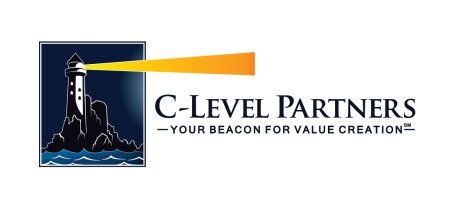When you look at the picture on the left, you see a beautiful well designed and manicured lawn that would make any owner proud. It’s nice to step back, admire and be proud of this accomplishment and, as they say, “stop and smell the roses?” In the corporate word, though, how many executives actually take the time to sit back, reflect, appreciate what they have and dream about what is yet to come? Is corporate renewal something that is performed only when necessary? Or is it part of a normal process that needs to take place on an ongoing basis? In my opinion, corporate renewal and growth has to become part of the corporate battle rhythm.
Often, success breeds complacence and problems for future growth. Executives can look at different levels of corporate health and attach to each of them a different process for corporate renewal. At one end of the spectrum, a company is healthy and world looks rosy (so to speak). At the other end of the spectrum, a company is in severe financial distress and is on the verge of insolvency and likely collapse. In between, companies may be moderately underperforming or severely underperforming due to a variety of reasons and those reasons may either be acute or a worsening of problems.
Corporate renewal may exist at each of these levels. For example, a healthy company will want to be proactive in its growth initiatives and business transformations. A moderately underperforming company facing emerging problems may have to take a more aggressive stance and apply remedial business transformation and possible management changes. Severe underperformers facing acute and worsening problems, but still rectifiable ones, will have to undergo a turnaround process usually with significant management changes. And finally, a company in severe distress will need to be rescued through bankruptcy proceedings, acquisition, or liquidation.
This article focuses on healthy and moderately under-performing companies. In both cases, a focused approach on renewal is warranted and can change the course of the company. With springtime is underway, what better time to look at your organization and think about where you are, where you want to go and how to get there? Taking time out from the operational grind is difficult but necessary. Thinking about your company in the context of tomorrow’s growth is one of those activities we find that is important but not urgent. Achieving this year’s sales growth is urgent as everyone has quarterly targets. What about next year? And the year after? We postulate that companies need to focus on future growth on a continual basis to ensure when tomorrow comes, the urgent problem is not survival.
We at C-Level Partners like to say, you cannot control the wind or the sea, but you can control the trim of the sails to reach your destination. We hope this checklist of questions and suggested ideas will help you take a breather, take time to appreciate where your company is on its growth path, consider changes and potentially reset those sails.
Step 1: Vision and the End Game. The first step is to figure out where you want to be. An interesting way to start is to conduct a visioning exercise among the top leaders of your organization. See if there is alignment. What do you want your company to be? And where do you see your company in 3-5 years? Are you on the course to get there? Are all of your executives on the same page? Is your brand being consistently executed at all customer and distributor touch points? Do you need to focus on organic growth – moving ahead with a clear mandate to stay in front of your customers’ needs and competing products? Or do you want to ensure organizational stability because your key imperative is consistent cash flow and your markets are stable?
Step 2: Customer Jujitsu. It all begins with the customer – those customers you currently have, and those new customers that you would like to buy your current services, or new customers that would buy your new services. The ability to leverage customer needs is what I call Customer Jujitsu. To truly understand what your customers want, here are some thoughts. Set up a customer or distributor advisory board to provide input on your marketing, brand, products, operations, delivery, customer service or any other category. Bring a few of your customers to your strategic offsite. We did this with a company in Canada and the executives were taken aback by some of the comments. The good news is that it provided a shock to their system and caused them to change positively.
Perhaps set up time for your executives to work on the front line. Hyatt executive routinely work at the front desk or in service jobs in a hotel. When I was an executive in a large iconic telco, I went out on service calls to see how our products were used and saw problems that led to my creating new and better products. Do mystery shopping similar to what the TV show Undercover Boss demonstrates. It’s amazing what you learn by doing and listening.
Step 3: Corporate Competencies. Corporations are unique in terms of their culture and their functional competencies. I add culture as a competency because culture is hard to replicate. Google, Zappos or Nordstrom. Does your company have an innovative culture or one of fast followership? Neither one is good or bad in its own right but the right culture will help implement your vision.
What are your strategic control points, i.e. why are you unique and what moat have you created? Depending on your vision and future plans, what competencies do you need to grow internally and which ones can you outsource? What does your partner eco-system look like and do you need to expand it to provide those competencies?
Step 4: Competitive Analysis. Sun Tzu, the great Chinese Warrior, said if you know yourself and your enemies you shall fear no battle and come out the conqueror; if you don’t know one or the other you will lose 50% of the battles. In reality the battle for customers and market share is won before the battle in the market. Companies do this by understanding the environment and the competition and developing solid executable plans to take advantage of their competencies and the competitors’ weaknesses. In Step 3, we talked about understanding your company. In this Step 4, executives need to understand and walk in the shoes of their competitors. This is where paranoia comes in handy.
Company executives should keep a focus on their major competitors who are directly competing with products and services. Do you know which companies are upstarts that might be entering your market? Remember IBM did not think that much of Microsoft when it came into existence. Who would have thought Tesla would be leading the way for electric cars or that Google would be in the autonomous driving business? Or that Facebook would be the behemoth of social media?
Step 5. Assessment, direction and focus. There are several routes to revenue growth and renewal. The executive team needs to determine those routes and the ways to enable them to achieve success. How your executive team assesses the opportunities and threats are critical to long term success. Do you have a formal process to review opportunities and growth initiatives? How do you prioritize them? Are all the executives committed to the vision and goals and how does that translate to priorities? How many priorities do you have? Are you attempting to tackle 2, 5 or 10 things at the same time? Do you have an executive assigned to lead your strategic initiatives? Do you have a risk mitigation plan in place in case something goes bump in the night?
Focus. Focus. Focus. We have seen many companies try to tackle too many things at the same time. The key for most companies is to take 2 or perhaps three major initiatives and complete them first. Then go back to the list and add a new one for every one that has been completed.
Step 6: PODFU. This is a made up word but a powerful concept!!! I learned this concept when I was a young executive and it was taught to me by a highly regarded Fortune CEO. The acronym stands for Plan, Organize, Delegate and Follow-up. This is where execution takes over. I personally like to incorporate a system called RACI to define the roles of the various members on the team. Always remember the person accountable (they are the ones to deliver the results), who is on their team (the people responsible for portions of the project and responsible to the team lead), who will be consulted before decisions are made and who is informed of decisions made.
The final component of Step 6 is the follow-up. We use a metric driven and quantitative dashboard to ensure that the project, opportunity or business is on track. Do you use an executive dashboard? Do you share the results with only executives or with the entire company? And most important, do each of your employees understand their role in delivering the results and ensuring the company vision is attained? Trickle down is critical for long term success.
I read an interesting article the other day that compared the list of companies on the Fortune 500 in 1955 to the list of companies on the Fortune 500 in 1995. A little more than 10% of those companies existed in their same form only 40 years later. New entrants, new business models, new organization designs and new technology, and perhaps bad management, caused massive changes to that list. To avoid those problems, companies need to be proactive.
Company executives need to step back and think about their goals and their keys to success. While we believe that companies can do this on their own sometimes an outside perspective is needed or a facilitator of an executive offsite is required. If those needs arise, C-Level Partners might be able to help. Feel free to call me for a one hour complimentary consultation where we can discuss your business issues and this article. You may reach me at dfriedman@clevelpartners.net or at 949 439-4503.




